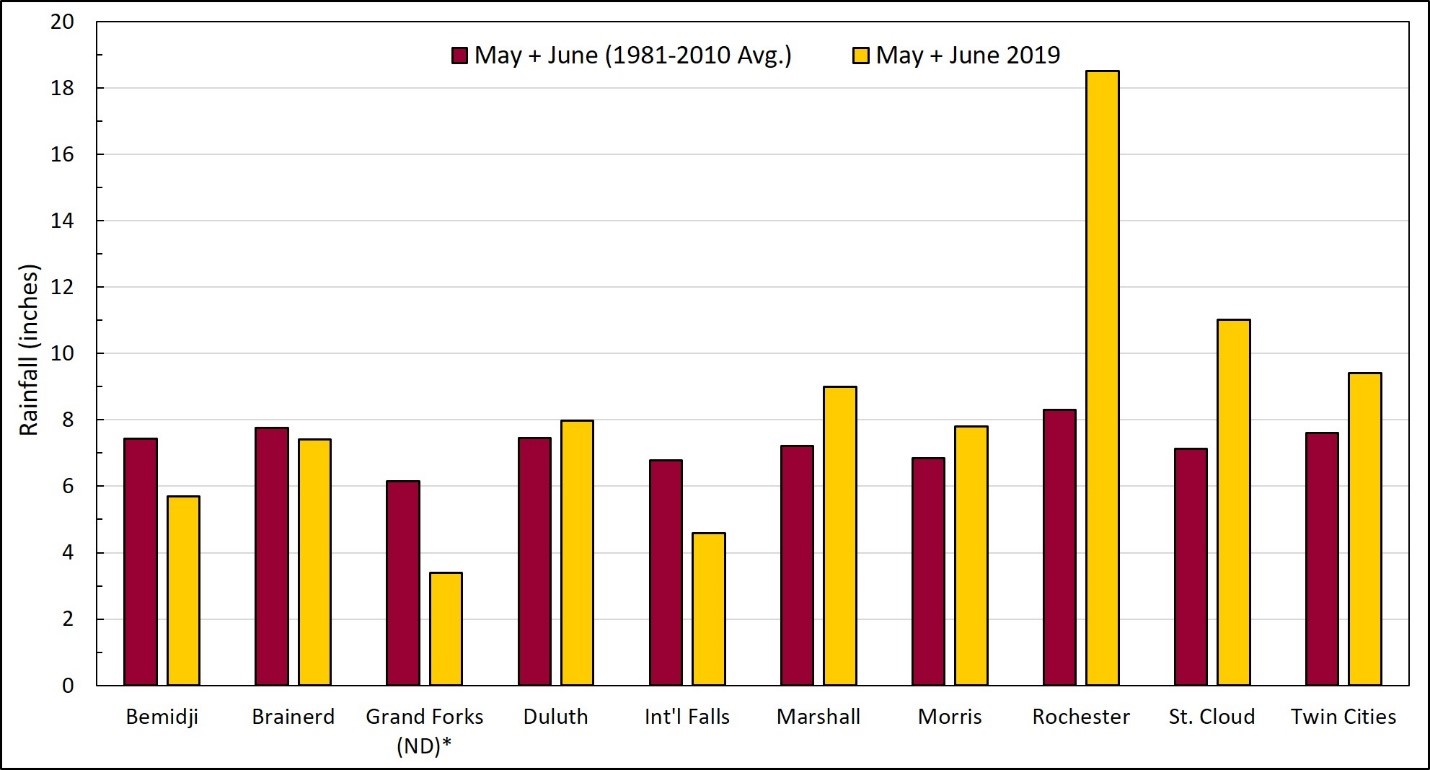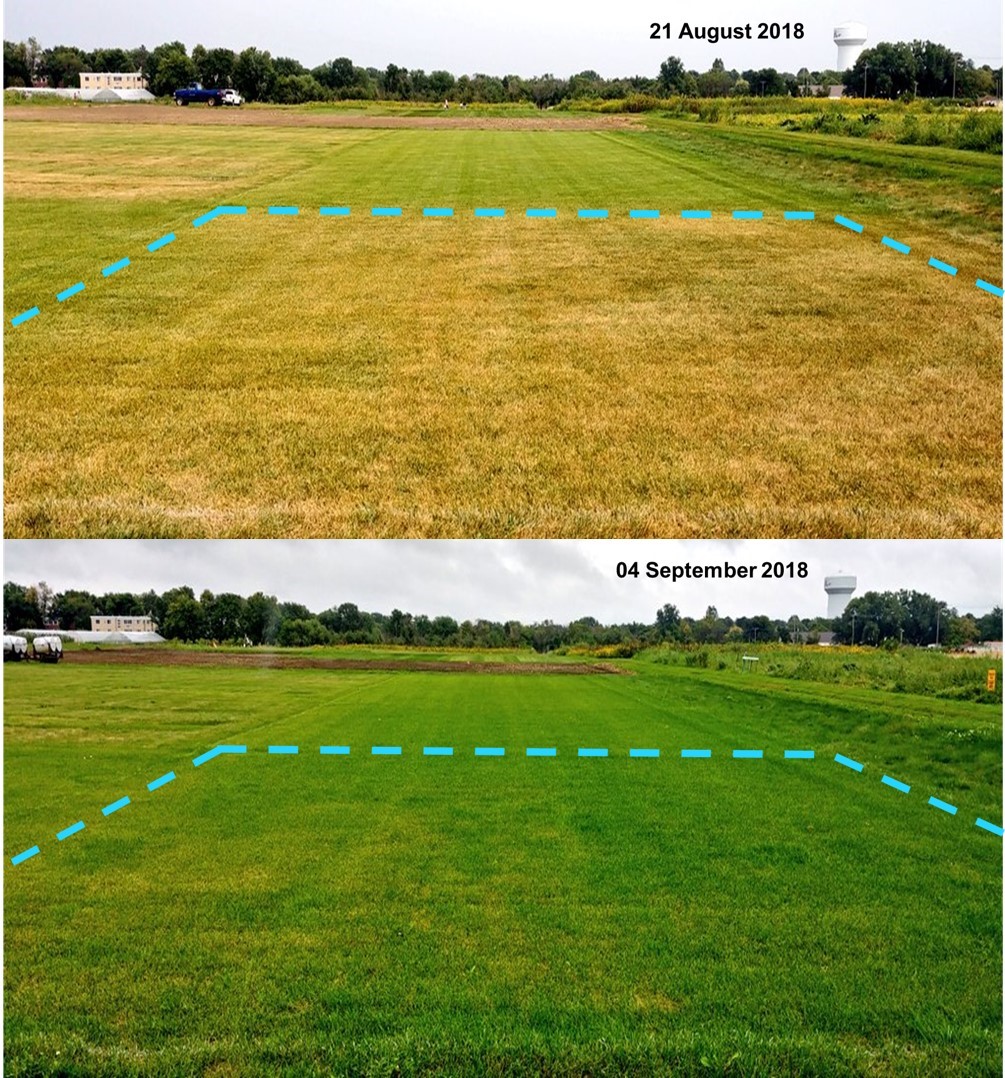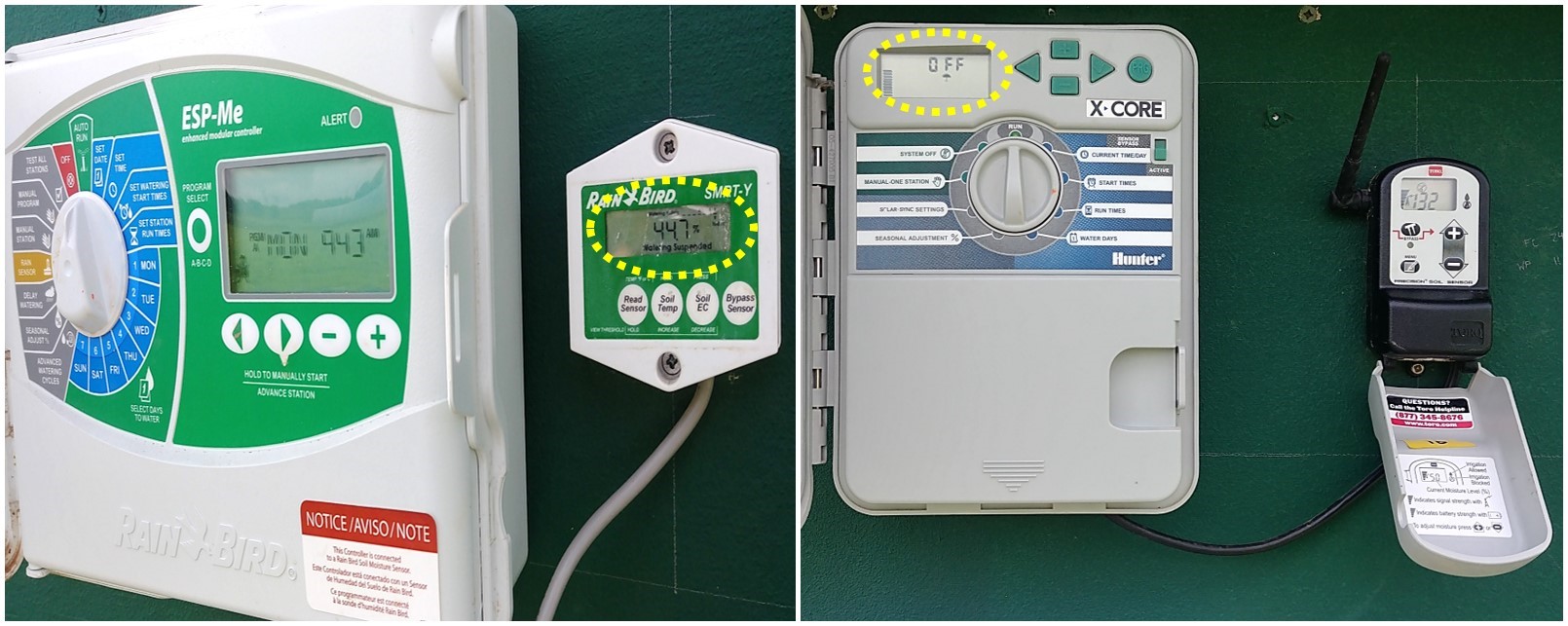By Dan Sandor
July is annually recognized by the Irrigation Association as Smart Irrigation Month, but what does it mean to utilize smart irrigation? In a time of smartphones, smart watches, smart appliances, and smart homes why shouldn’t your lawn’s sprinkler system be just as intelligent? Over the last decade, new improved technologies, such as soil moisture sensors and smart irrigation controllers have entered the residential and commercial market and can be used to upgrade your current sprinkler system.
In the Land of 10,000 Lakes, water is seemingly plentiful, but an abundance is still no excuse for negligent water use, whether it’s indoor or outdoor. Of course it’s much easier to identify sources of indoor water waste, such as leaving the faucet running while brushing your teeth or washing half loads of laundry or dishes. However homeowners and property managers may be unaware of how much water is applied, and therein wasted, through their programmed irrigation schedules; it is very likely more water is being applied than is actual necessary.
It is important to bear in mind that irrigation should be only utilized as a supplement to rainfall, and not used as the primary source of water for the lawn. Here in the Twin Cities we received a combined 9.4 inches of rain during May and June this spring (Figure 1), which was approximately 25% more rain than our 30-year average during these months; so the likelihood of even needing to even irrigate so far this spring / early summer has been very minimal. The national weather service provides historical, 30-year temperature and rainfall data for most cities in each state and you can compare the 2019 year-to-date precipitation against the 30-year data for your area.
So now that we have transitioned from a wet spring into summer’s heat, how can you make smart choices and participate in smart irrigation month by watering more wisely? To begin with, the most efficient way to irrigate your lawn is to simply leave the controller in the OFF position and only irrigate when absolutely necessary (when the turf begins to show some drought stress). You may consider lowering your expectations as well; a little brown isn’t necessarily bad and the turf will recover upon significant rainfall or after the next scheduled irrigation event (Figure 2).
The state of Minnesota requires all automated irrigation systems installed after July 1, 2003 to have technologies installed, such as a rain sensor, soil moisture sensor, or smart controller, to prevent or stop unnecessary irrigation during periods of sufficient moisture. Some advantages and disadvantages of these three technologies are listed in Table 1 below.
| Technology | Advantages | Disadvantages |
|---|---|---|
Rain Sensors |
|
|
Smart Controllers |
|
|
Soil Moisture Sensors |
|
|
Rain sensors and soil moisture sensors bypass scheduled irrigation programs completely due to either significant rainfall or sufficient soil moisture – essentially turning off the controller (Figure 3). Smart controllers utilize historical, or current, regional weather data to make adjustments for the scheduled irrigation program. Most smart controllers utilize Wi-Fi to communicate with local weather stations to adjust program runtimes, while others may come with a weather sensor to utilize on-site weather data for making runtime adjustments. Your property may have multiple irrigated zones including areas like gardens, trees, shrubs, and ornamental & bedding plants that may require more frequent watering than turfgrasses. Upgrading your sprinkler timer to a smart irrigation controller or installing a soil-moisture sensor in the lawn, are two ways to isolate the yard from these other irrigated zones. The Irrigation Association and the EPA Water Sense program have resources to help you locate and learn more about these specific technologies.
Finally, one of the smartest irrigation practices to follow is to conduct an irrigation audit, whichyou should do this regardless of whether you have a traditional or smart irrigation system. We generally recommend this is conducted once every year, usually in the spring. As most irrigation programs run late overnight or during the early hours of the morning, it is likely unknown if the sprinkler system is even running properly and / or if water is being applied in an efficient manner. The first step in an irrigation audit is to run a manual cycle for each zone in your system, then you will be able to make sure all the heads are aligned correctly to prevent unnecessary watering of impervious surfaces and other non-target areas. During the manual cycle also check for any broken heads / nozzles and for leaks that may be coming from underground around fittings, valves, and joints. Once all the heads are aligned and all leaks have be repaired, you can begin the catch-cup test; information on how to perform that test is provided here by UMN Extension. Once you have completed the test you can program the runtimes and then let the rain sensor, soil moisture sensor, or smart irrigation controller take it from there.
July isn’t the only month of the year to practice smart irrigation. In fact, you should start every spring by auditing your sprinkler system and evaluating each zone for any leaks and repairs that will need to be made before you begin programming zones for the summertime heat. After you finish the auditing procedure you may be just fine keeping your system turned off, for your lawn at least, and turning it on only when you need to. If that’s not an option, then consider investing in a soil moisture sensor or upgrading to a smart controller and become a more intelligent irrigator and finer steward of a precious resource.
Further Reading:
Cardenas-Lailhacar, B. and M.D. Dukes. 2008. Expanding disk rain sensor performance and potential irrigation water savings. J. Irrig. Drain. Eng. 134:67-73.
Cardenas-Lailhacar, B. and M.D. Dukes. 2012. Soil moisture sensor landscape irrigation controllers: A review of multi-study results and future implications. Trans. ASABE. 55:581-590.
Carrow, R.N. 2006. Can we maintain turf to customers’ satisfaction with less water? Agric. Water Manag. 80: 117-131.
Dukes, M.D. and D.Z. Haman. 2017. Residential irrigation system rainfall shutoff devices, or rain sensors. UF/IFAS Extension. Bul. ABE325.
Dukes, M.D., M. Shedd, and B. Cardenas-Lailhacar. 2015. Smart irrigation controllers: How do soil moisture senor (sms) irrigation controllers work? UF/IFAS Extension. Bul. AE347.
Fender, D.H. 2008. Urban turfgrasses in times of a water crisis: benefits and concerns. In: J.B. Beard and M.P. Kenna, eds., Water quality and quantity issues for turfgrasses in urban landscapes. Council for Agricultural Science and Technology, Ames, IA. p. 11-31.
Grabow, G.L., I.E. Ghali, R.L. Huffman, G.L. Miller, D. Bowman, and A. Vasanth. 2013. Water application efficiency and adequacy of ET-based and soil moisture-based irrigation controllers for turfgrass irrigation. J. Irrig. Drain. Eng. 139:113-123.
Leinauer, B. and D.A. Devitt. 2013. Irrigation science and technology. In: J.C. Stier, B.P. Horgan, and S.A. Bonos, editors, Agronomy Monograph 56 Turfgrass: Biology, Use, and Management. American Society of Agronomy, Crop Science Society of America, Soil Science Society of America: Madison, WI. p. 1075-1131.
Leinauer, B. and R. Green. 2011. Water management technologies. In S.T. Cockerham and B. Leinauer, eds., 2011. Turfgrass water conservation. University of California Agriculture and Natural Resources. 2nd edition. Publication 3523:101-112
Meeks, L., M.D. Dukes, K.W. Migliaccio, and B. Cardenas-Lailhacar. 2012. Long term expanding-disk rain sensor accuracy. J. Irrig. Drain. Eng. 138:16-20.
Muñoz-Carpena, R. 2018. Field devices for measuring soil water content. UF/IFAS Extension. Bul. BUL343.



